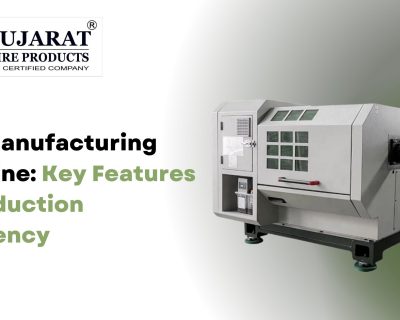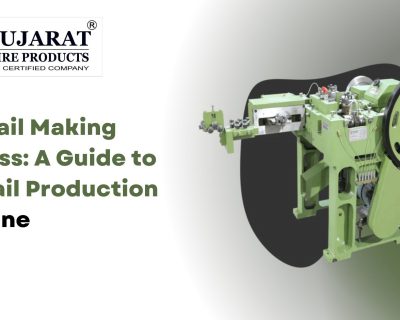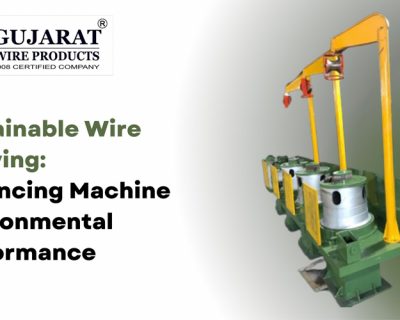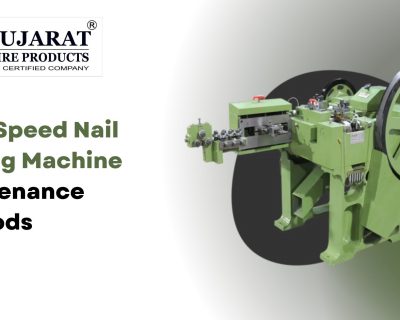Blog
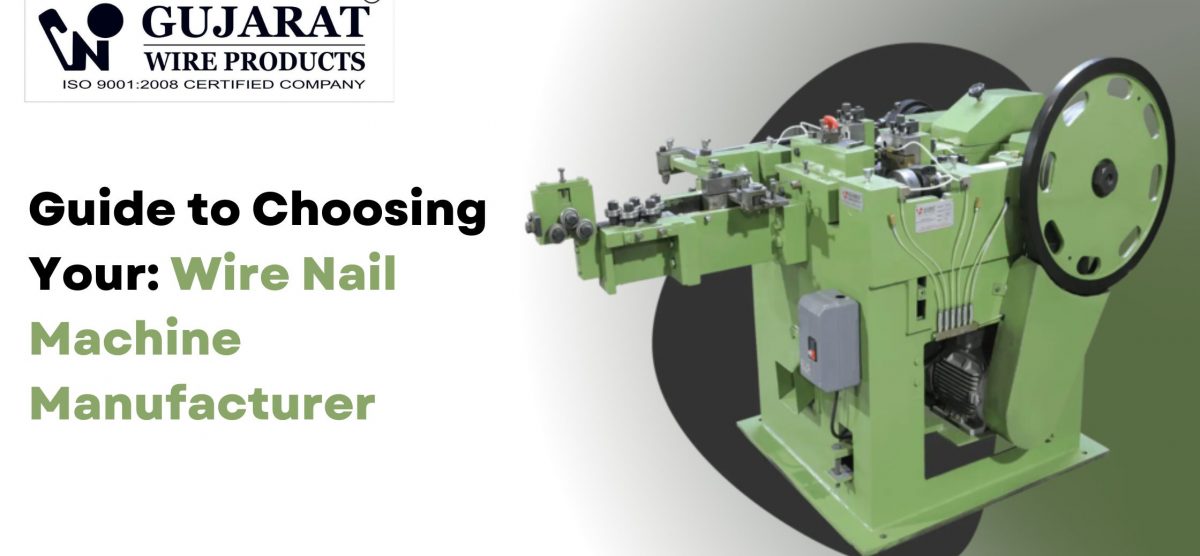
Guide to Choosing Your Wire Nail Machine Manufacturer
India is one of the world’s most competitive bases for wire-nail machinery: deep vendor ecosystems, export-ready factories, and a buyer culture that negotiates hard on capex but harder on uptime.
This guide is written for plant owners and production heads who need to separate brochure polish from shop-floor truth. Brought to you by Gujarat Wire Products, a long-running Indian OEM known for practical, operator-friendly nail-plant equipment—mentioned here for context, and again only at the end, per your integration rule.
What Makes a Good Wire Nail Machine Manufacturer? (Trust signals buyers expect)
The “right” manufacturer isn’t just the one with a thicker catalogue. Buyers who run profitable lines evaluate the company, not only the machine.
- Years in business & installed base. A decade in the category, with visible installs across states or export markets, usually maps to parts availability and tribal knowledge. If a vendor can show you plants like yours, that’s gold.
- Quality systems you can audit. ISO is table stakes; the real tell is process discipline—incoming wire checks, subassembly jigs, spindle runout control, and test protocols before dispatch.
- Service network & response SLAs. Two technicians and a promise is not a network. Look for stocked spares, documented MTTR (mean time to repair), and training modules that aren’t one afternoon of chai and “you’ll manage.”
- Commissioning & ramp-up support. Good manufacturers own the first 30–60 days: alignment, fine-tuning, recipe suggestions for different nail lengths, and a checklist for shift leaders.
- Transparency on consumables & tooling. If dies, punches, or polishing media are a mystery line item, your cost model will be, too. The best vendors hand you a consumption curve before you ask.
Product Families at a Glance (How the market segments machines)
Most buyers don’t need every machine; they need the right bundle. Top-performing pages in this category organize offerings like this:
- High-Speed Nail Making Machines. Built for throughput (nails/min), optimized feed mechanisms, and stable cut-off. Perfect for standard shank production when demand is predictable and logistics favor volume.
- Standard/Universal Wire Nail Making Machines. Versatile workhorses covering a broad range of diameters and lengths with simple changeovers. Ideal for mixed-order shops or markets with seasonality.
- Coil / Roofing / Strip Nail Lines. When the downstream customer wants collated nails, this is an integrated sell: nailer-friendly coils/strips, consistent glue, and heat-treated heads that don’t crack under the gun.
- Wire Drawing Machines (paired equipment). If you’re buying nailers but ignoring drawing, you’re outsourcing your destiny to the wire vendor’s quality. Drawing in-house lets you tune diameter tolerance and surface prep.
- Ancillary Machines.Polishing barrels for finish, cutter grinders for keeping edges true, thread rolling for ring/screw shanks, gripping dies & header punches as the wear-parts ecosystem that keeps OEE honest.
Best-Sellers Snapshot (How buyers scan models fast)
Winning catalog pages help skimmers compare at a glance. Recreate that clarity in your head—even before a demo—using a simple three-line lens for each machine you evaluate:
- Model family & use-case: high-speed / universal / coil line / drawing
- Headline spec: nail length range, wire diameter range, indicative nails/min
- Plant fit: operator skill needed, typical changeover time, typical power draw
You’ll notice that once you standardize the lens, marketing fog lifts. If a vendor can’t fill those three lines cleanly, expect the same vagueness after installation.
Key Features Buyers Compare (Checklist that actually maps to reality)
1) Build & rigidity.
Bed casting, slide ways, and the stiffness of the cut-off mechanism decide vibration, which decides finish and scrap. Ask to see the base casting and machining process; your rejection rate lives there.
2) Speed & output stability (nails/min).
Everyone quotes a heroic max. What matters is sustained speed with your actual wire quality and nail spec. Request a production-rate curve across the whole nail length range.
3) Nail size range & changeover simplicity.
If 30% of your orders live near the extremes (short 1″ pins and long 4″ nails), check changeover tooling and the time to hit good-first-piece. Documented work instructions beat “Ramesh ji will show you.”
4) Cut-off accuracy & head formation.
Length dispersion and head concentricity decide returns. Inspect sample trays, not just one “hero” batch. For coil nails, confirm head geometry that works with your customers’ nailers.
5) Operator ergonomics & safety.
Footprint, noise, guarding, reach to controls, and chip evacuation matter over a 12-hour shift. An extra 1% on OEE from less fatigue is often the cheapest payback you’ll find.
6) Maintenance access & spares.
Can a technician access the feed rolls, clutch, and lubrication points without contortionist skills? Are wear parts standardized and available locally? Your downtime answer is hidden in that question.
7) Electricals & drive choice.
Clean panels, labeled wiring, overload protection, and documented VFD parameters (where applicable) are the difference between a five-minute reset and a weekend of guesswork.
Plant Essentials Beyond the Main Machine (End-to-end line thinking)
A nail plant is a system, not a hero machine. If you buy only the centerpiece, you’ll end up firefighting at the edges.
- Wire Drawing: Controls tensile properties and surface prep. Poor drawing = feed slip, burrs, bent nails. If your supplier’s diameter tolerance varies, adding a single-block or multi-block drawing machine may return more than any “faster” nailer will.
- Polishing Drum / Barrel: Finish sells. Consistent polish reduces complaints from retail channels and improves coating adhesion if you galvanize or paint downstream.
- Cutter Grinder: The quiet hero. Sharp cutters keep lengths consistent and lower motor load. Budget for grinding discipline; it’s cheaper than rework.
- Thread Rolling (ring/screw shank): Essential if you service construction/roofing trades. Validate the roll die’s life and the vendor’s stock.
- Dies, Punches, Gripping Tools: Treat them as a managed inventory line. Keep a bin system, track life by batch, and negotiate replenishment SLAs in your purchase contract.
How to Choose the Right Manufacturer (Decision factors & due diligence)
- Start with your nail mix, not their brochure. What’s the monthly volume split by length and diameter? Seasonality? Export compliance? Map it. The right vendor for 2″ common nails at volume is not automatically right for short pins plus collated roofing.
- Insist on a demo with your wire. Vendors love perfect wire and ideal settings. Bring the reality of your supply chain to the demo: actual coils, real humidity, your operator. Watch the machine’s temperament change.
- Assess training depth. Ask to see the training agenda. Good vendors cover safe operation, routine maintenance, troubleshooting trees, and tooling care. Great vendors make your shift leader teach back.
- Audit the commissioning plan. A written plan with dates, responsibilities, acceptance tests, and a hyper-care window beats verbal bravado. If it’s not on paper, it’s not a plan.
- Check spares and service SLAs in writing. Stocked spares list, lead times, and escalation paths. Make the awkward conversation now; avoid the angry one later.
- Call three references. Pick one metro, one Tier-2 city, and one export client if possible. Ask each: What failed? How fast did they respond? What would you do differently?
Price Signals & Where to Benchmark (What public listings actually show)
If you’re hunting for a magical “standard price,” you’re going to be disappointed. What the public web reliably shows is structure, not certainty:
- “Ask for Price” / “Get Quote” patterns. Listings tell you how vendors segment machines by length/diameter range, speed class, and motor HP. Use those cues to benchmark tiers, not to negotiate pennies.
- Options move numbers. Collation units, auto lubrication, dust extraction, sound enclosures, better guards, and upgraded electrics move the price meaningfully—but so does the ROI. Cut the options you won’t use; fight for the ones that pay back in months.
- Tooling and consumables matter. Dies and punches are your silent opex. Model life and replenishment cost. A slightly higher capex with longer die life can be a smarter total-cost decision.
- Freight, install, and training. Pretend these are free and you’ll pay for them another way. Demand an all-in landed, commissioned, trained number so your spreadsheet reflects reality.
Customers, Reviews & Export Network (Social proof that actually predicts experience)
Logos look good on websites; what you want is pattern recognition:
- Customer diversity. A vendor supplying both domestic and export plants suggests process maturity. If they can manage documentation, crating, and voltage variations, they’ll likely manage your quirks too.
- Review signal quality. Ignore the “great service!” one-liners; look for specifics: response time, spare availability, training effectiveness, and honesty about teething issues.
- Dealer/partner ecosystem. Healthy partners stock parts and have technicians who’ve seen your exact failure before. Ask how they’re incentivized—partners paid only on new sales tend to disappear after commissioning.
FAQs (Stick to what buyers actually ask)
Q: What types of nail machines are available?
A: High-speed for throughput, universal for flexibility, coil/roofing lines for collated formats, plus wire drawing and ancillaries. Choose based on your product mix and sales channels.
Q: Which features matter most?
A: Rigidity, reliable feed and cut-off, consistent head formation, changeover simplicity, and serviceability. Speed counts only if you can hold it sustainably with your wire quality.
Q: How do I future-proof the purchase?
A: Leave electrical capacity headroom, specify control hardware you can service locally, and pick a vendor that updates training and manuals—not just machines.
Q: Can a universal machine handle everything?
A: It can handle most of a mixed portfolio, but coil/roofing, ring/screw shank, or ultra-short pins often want dedicated modules or lines. Let your order book decide.
Q: What’s the usual ramp-up time?
A: Plan a few weeks for commissioning, operator training, and dialing in tooling. Treat the first month as a learning curve with aggressive feedback loops.
Videos (Optional but smart)
If you have machine walk-arounds, line-side footage, or short “problem → fix” clips, embed them. Nothing calms a CFO like seeing steady feed, clean cut-offs, and uniform heads in 20 seconds. Keep the edits honest—grease, noise, and all. The plant buys reality, not vibes.
Contact / Get a Quote
Choosing a wire nail machine manufacturer isn’t about finding the loudest claim; it’s about pairing your product mix with their build discipline, training depth, and service reality. Map your nail lengths and diameters, bring your wire to a demo, and force clarity on spares and commissioning. Then negotiate—hard—on the options that actually improve throughput or reduce scrap.
When you’re ready to see how a practical, operator-first line comes together, talk to Gujarat Wire Products. Ask for a demo with your real wire, a written commissioning plan, and the spares list you’ll wish you had on day one. If the goal is clean heads, steady lengths, and a quieter night shift, that conversation is where your decision starts—and, frankly, where it pays back.

